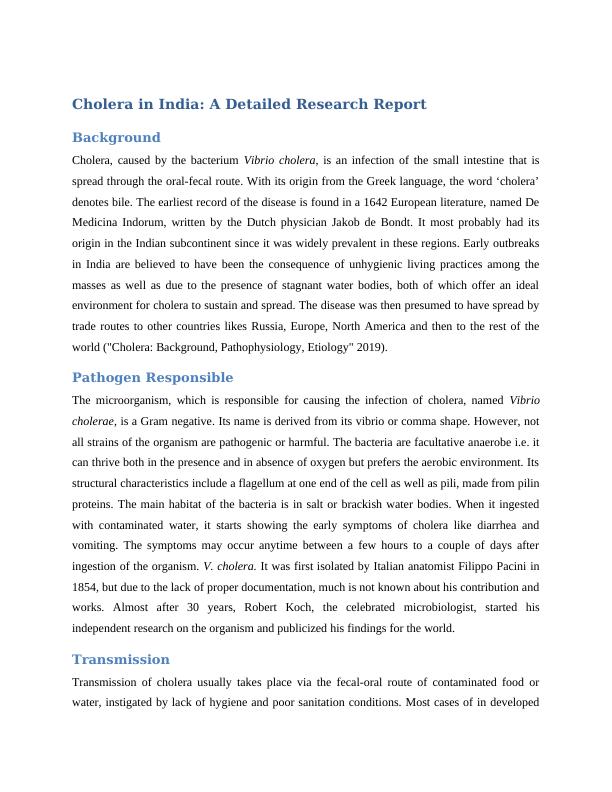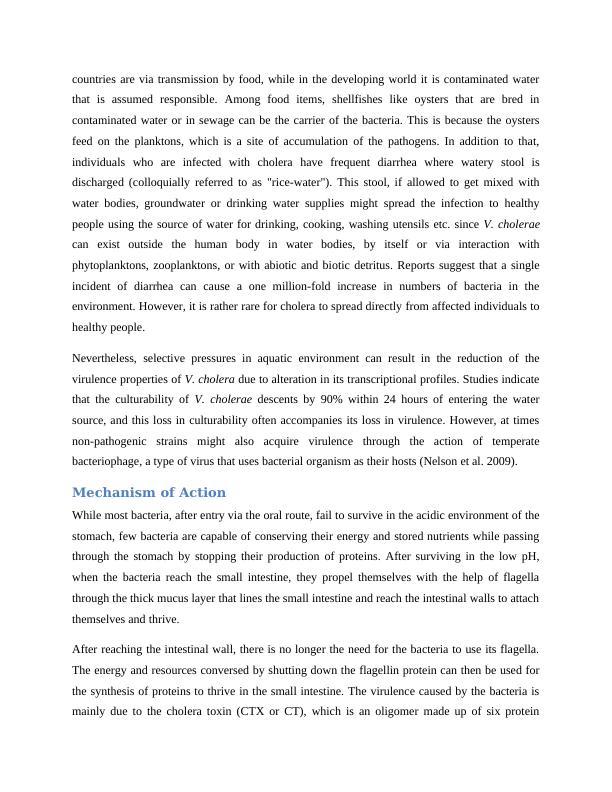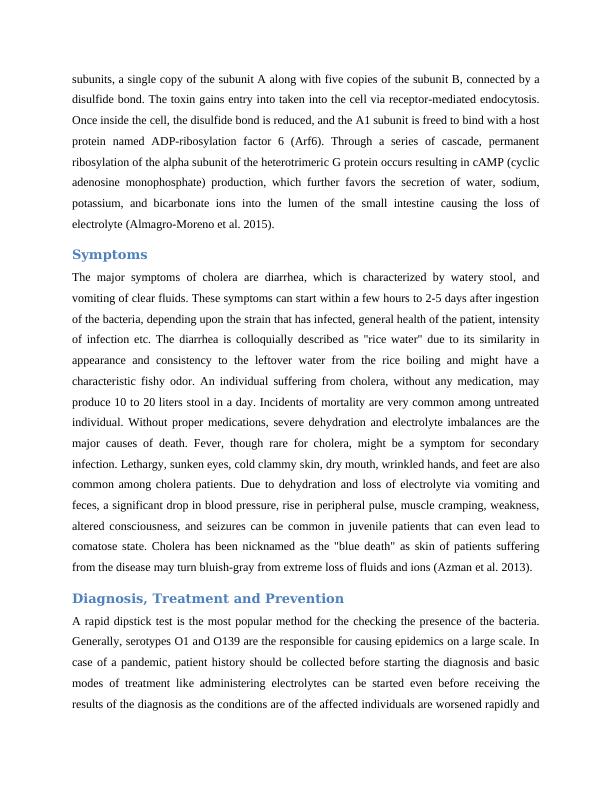The earl symptoms of cholera
The case-study will be on a communicable disease in a given jurisdiction. Students are expected to address the different scales of disease, from the microbial, transmission and spatial patters and examining the importance of cultural, political, physical, environment and social factors in the population’s epidemiologic profile (multi-level model). Through the integration of the main concepts discussed in class and mastering critical and creative thinking, students are expected to debate the societal and political complexities of health and disease. The class presentation on the selected communicable disease and jurisdictions will take place on September 16.
Added on 2022-09-14
About This Document
assignment is on communicable disease
The earl symptoms of cholera
The case-study will be on a communicable disease in a given jurisdiction. Students are expected to address the different scales of disease, from the microbial, transmission and spatial patters and examining the importance of cultural, political, physical, environment and social factors in the population’s epidemiologic profile (multi-level model). Through the integration of the main concepts discussed in class and mastering critical and creative thinking, students are expected to debate the societal and political complexities of health and disease. The class presentation on the selected communicable disease and jurisdictions will take place on September 16.
Added on 2022-09-14
End of preview
Want to access all the pages? Upload your documents or become a member.



